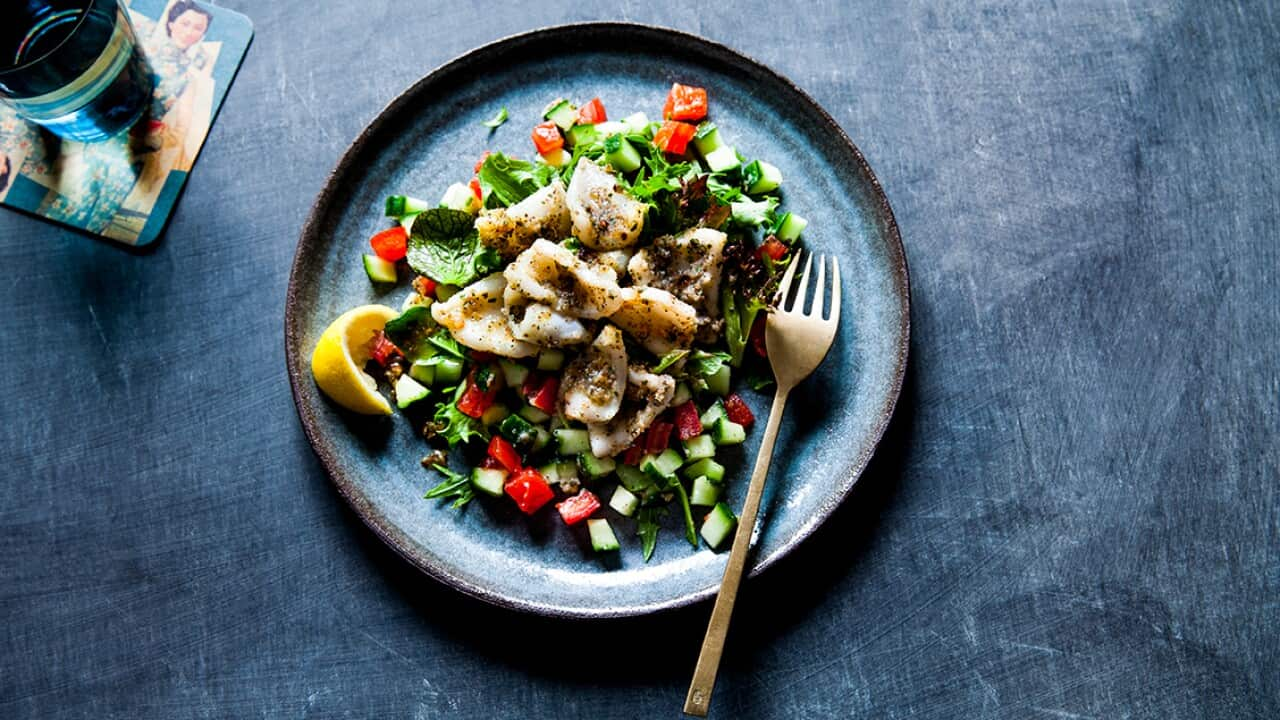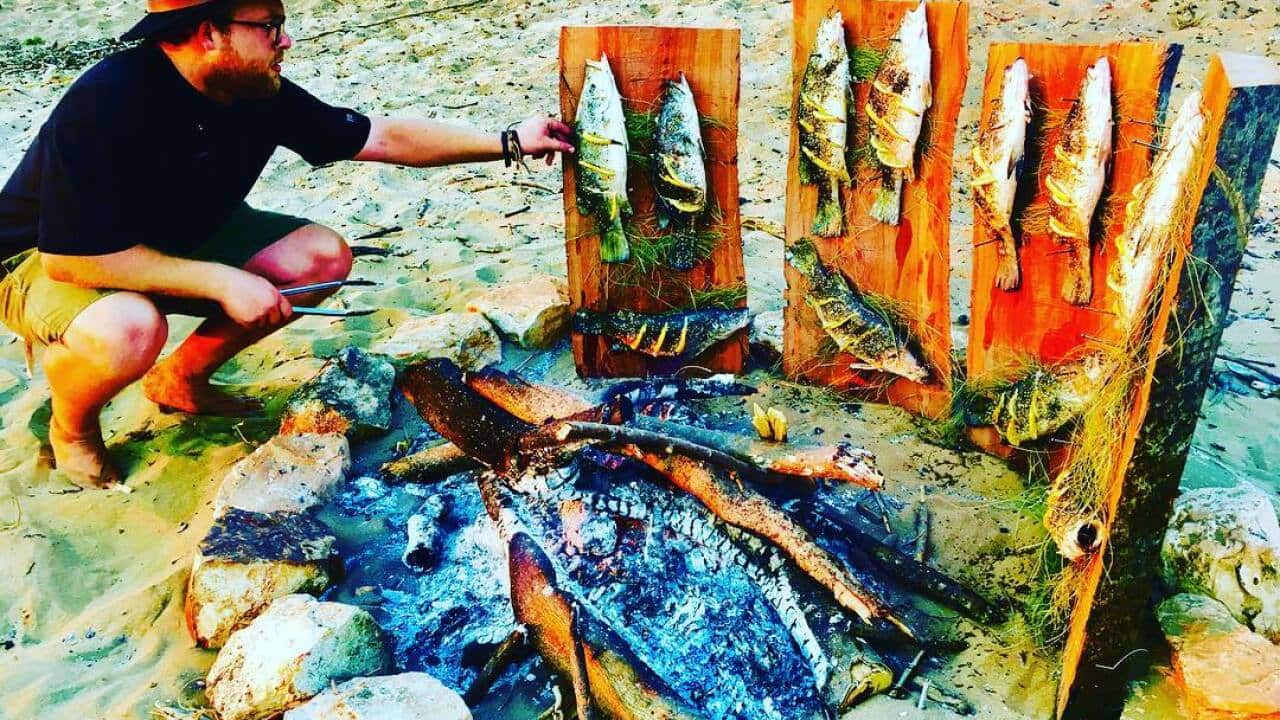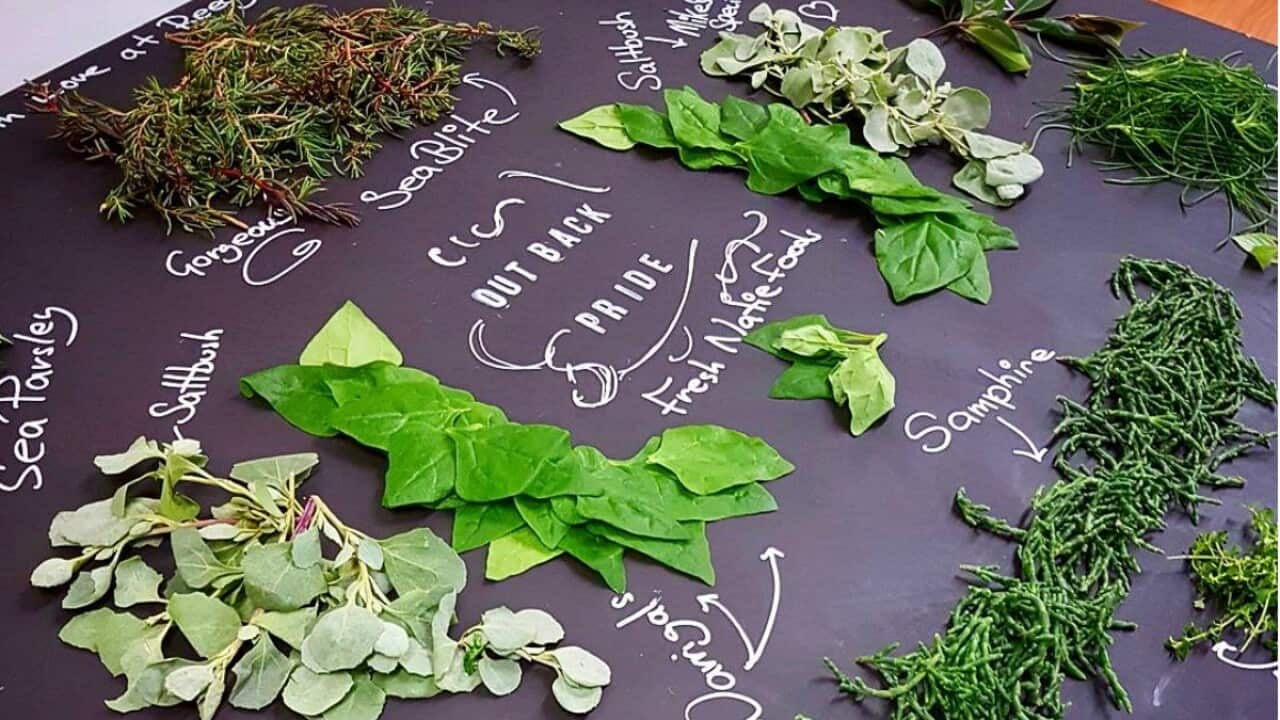National NAIDOC Week (3 – 10 July 2022) celebrates the history, cultures and achievements of Aboriginal and Torres Strait Islander peoples. Join SBS and NITV for a full slate of , and follow NITV on and to be part of the conversation. For more information about NAIDOC Week or this year’s theme, head to the .
As a child growing up in Alice Springs, Gayle Quarmby loved being surrounded by bush food.
Running on the hot sand and down the edges of the dry riverbeds with friends, they would chase down kutjera (bush tomatoes), quandongs and any other native food they could get their hands on.
Foraging was the game of choice in the absence of TV.
“I didn’t realise what an absolute treasure of a gift I had in my childhood, to be able to very gratefully spend time with this incredible source of cultural knowledge,” says Gayle, who later moved to Reedy Creek about 300 kilometres southeast of Adelaide in the Limestone Coast region of South Australia.
It wasn’t until after she had moved away, married and tragically lost her 20-year-old son that she and her husband Mike, a commercial nurseryman and botanist, would return in 1999 to the country of her childhood.
“Dad had always taught me that life is pretty tough but that when times were difficult, you don’t sit on the couch, because it will beat you and kill you,” she says.
But Gayle wasn’t returning to the same Alice Springs she left behind.
Gone were the tight-knit communities she would spend her days within, hunting down a native bounty.
"I was horrified to see that the young First Nations’ people were less literate and numerate than in my childhood and that the communities were very fractured.
“In my days, communities were stronger, family and culture was stronger, connection to the land was stronger. So it made us really examine how we could help," she says.
"We wanted to find pleasure somewhere to take us away from the terrible situation that we were in.”
The couple, who are now based in Reedy Creek again, decided to pool their super and invest $1 million of their own money into Aboriginal communities around arid zones of Australia, plus around $500,000 into growing plants in rural communities.
“We’ve encouraged and mentored people to have their own micro-businesses on community and for First Nations’ community to be able to actually own a place within the current native food industry.”
And so the Outback Pride Project was born, harvesting Australian native foods and promoting the industry by developing and supporting a network of production sites within Aboriginal communities.
Today, handpicks 50 tonnes of many different types of native leaf a year and supplies it to 800 chefs across Australia including Peter Gilmore, Kylie Kwong and Mark Olive.
Quarmby says people can trust where their products are from.
In contrast, “It’s a bit of an unknown as to where the supermarket-bought spices and herbs actually come from.”
“And to be truly relevant to the Australia we live in now as a fully inclusive Australia, we need to have more Australian Indigenous plants in our food.
"That would be a fantastic thing.”
Handpicking native food
For city-dwellers, foraging might seem a fanciful concept but Gayle says it’s easier than we think.
“I really recommend people to think very seriously about their own district, their own area that they live in, and find relevance for their food and their cooking.
“If you live in the middle of Sydney, you have the most wonderful resources around you that have always been there.”
She says there are warrigal greens, antioxidant-rich native spinach, on the beach, sea parsley on rocks close to the sea, and lots of lemon myrtle grown in domestic gardens.
“And also ryberries and lilly pillies that are street trees all around you.
"All of these things are the most wonderful resource that I think people need to reevaluate.”
Gayle shares with us how to create your own Indigenous herb and spice rack.
Swap lemon and pepper seasoning for lemon myrtle
Gayle says most people around Sydney have access to lemon myrtle bushes and recommends harvesting a few leaves and putting them on your window ledge to dry out.
“Then just whizz them up in the mixer to a flake or powder and seal them off."
Lemon myrtle is one of those good old basics in the native food industry, she says.
“It takes a very citron smell with a wonderful, grassy, fresh morning dew taste to it.
“It’s beyond just a bit of lemon peel; it has so many other elements of the Australian bush as well.”
Swap salt for saltbush
According to a nutrient analysis conducted by CSIRO, saltbush that Mike had grown organically in a hot house had 21 per cent protein, says Gayle.
She says saltbush is great for vegans being high in calcium, magnesium and zinc “and all of those trace elements that herbs grown hydroponically do not have”.
“This isn’t only a wonderful Aussie statement of where we are and what we’re proud of – it’s healthy stuff.”
NATIVE GOODNESS

Pass the saltbush: Is this one of Australia's best herbs?
Swap sesame or other seeds for wattleseeds
Wattleseeds, the edible seeds from Australia's dozens of wattle species, are .
They are high in protein, magnesium, zinc, calcium, iron and selenium.
Gayle describes their flavour as creamy and nutty. She says the coastal wattle produces higher amounts of oil, which help carry its nutty flavour.
You can alter their taste depending on how long you roast them.
“If we coffee-roast our wattleseed and sprinkle it on top of baked goodies, it certainly adds a new element.
“It’s great sprinkled on porridge or in bread, too.”
Swap parsley for sea parsley
“Our dear friend Simon Bryant from The Cook and The Chef calls sea parsley, ‘parsley on steroids’,” says Gayle.
“There’s a peppery aftertaste that ordinary parsley doesn’t have.
It grows on rocks close to the sea where they receive a generous dose of salty spray.
Sea parsley is more closely related to celery, meaning the stems can get quite thick and are full of flavour.
“There’s that celery-parsley taste with a huge amount of salty pepper.”
Swap black pepper for mountain pepper or pepperberry
This plant can be used in both sweet and savoury dishes, says Gayle.
“The female plant has these wonderful little rich magenta berries that...when you put one fresh in your mouth, you get the pepper and then it goes ‘boom!’ to this juniper, rich currant sort of flavour, and it really carries a long way.”
She says you can ground dry pepperberries with a mortar and pestle or you can make it into powder by blending it in a food processor.
Swap paprika or Italian/Moroccan seasoning for kutjera (bush tomato)
“A fit person could walk a few days with a handful of this fruit – it’s so rich in carbs, it’s like the superfood of Australia," says Gayle.
“They’re related to goji berries...and all those other powerful berries from overseas."
She says there’s a big demand for them and they also taste great in potato bakes and curries, on pizzas and in jams.
Other foods you can swap are mint for native river mint, thyme for native thyme, cinnamon for cinnamon myrtle, and aniseed for aniseed myrtle.
a selection of dedicated programming, special events and news highlights with a focus on encouraging greater understanding of Indigenous Australian perspectives. Join the conversation #AlwaysWasAlwaysWillBe.
THE WONDERS OF INDIGENOUS FOOD

Darwin's Indigenous pop-up restaurant finds a permanent home on wheels











